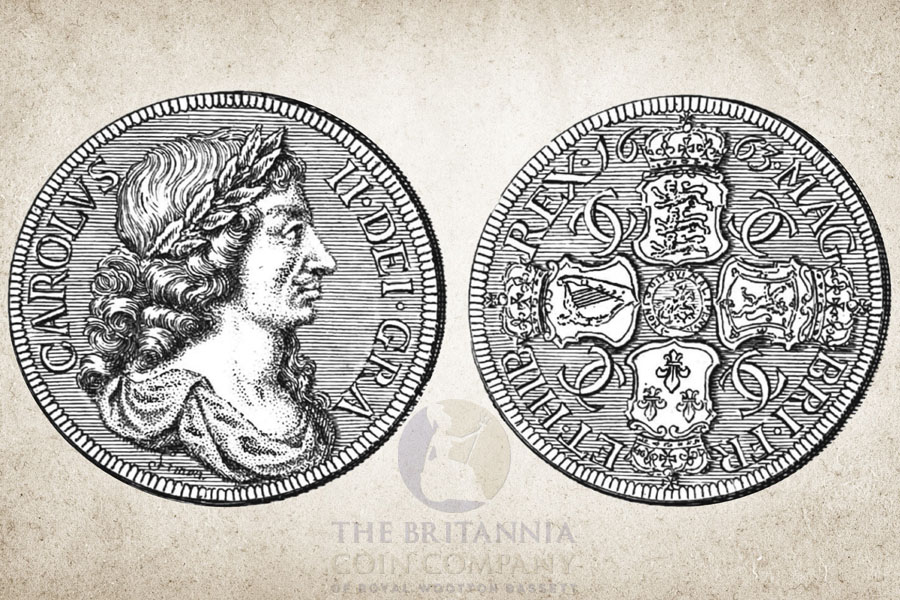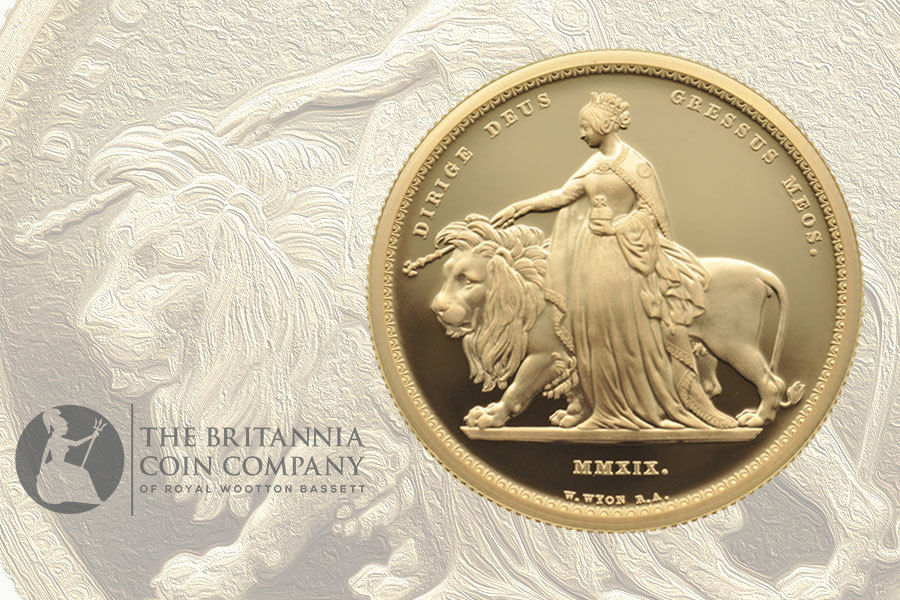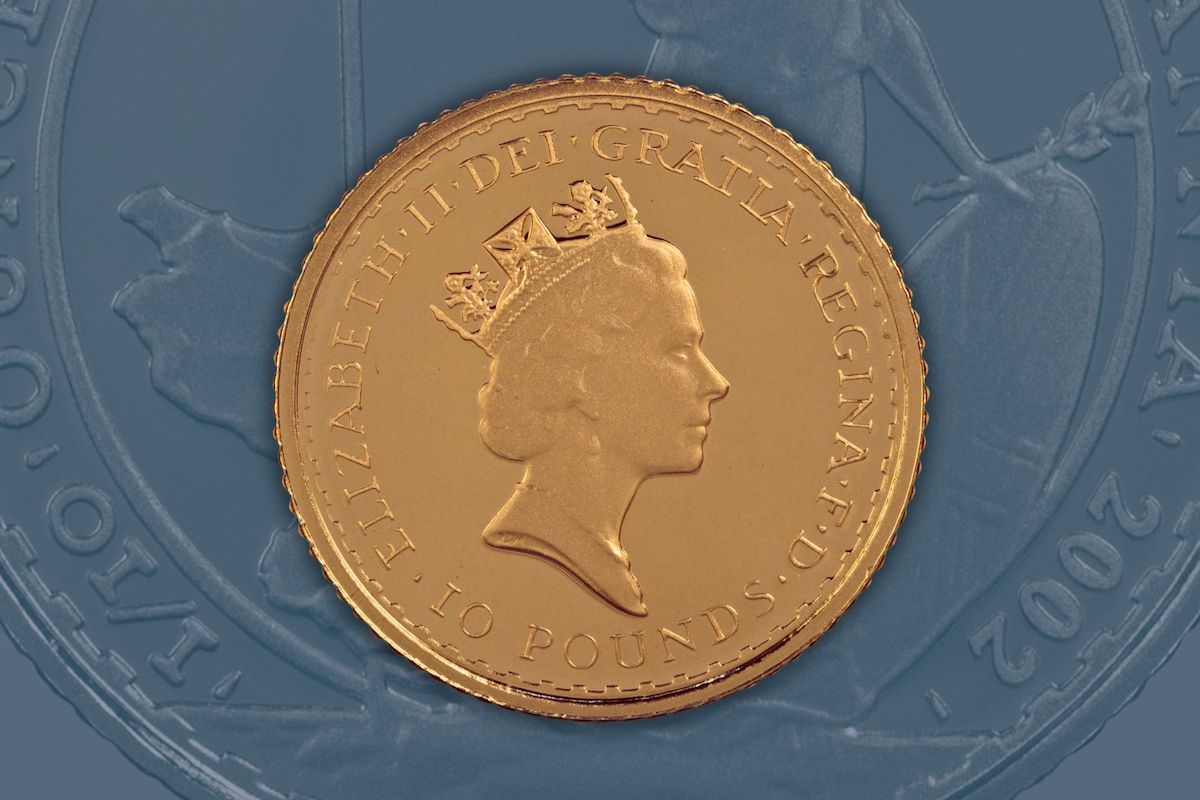
A 17 February proclamation, published in The London Gazette, confirms that Thomas Simon's famous 1663 Petition Crown will be recreated on new Great Engravers collectors coins from The Royal Mint, 360 years after it was first struck.
Proclamations like this one provide hints about upcoming releases from the UK's national mint, providing details of new ranges and additions to existing series. Reading between the lines, we're pretty sure that these forthcoming coins will be part of The Royal Mint's blockbuster Great Engravers collection.
The Great Engravers Collection
Begun in 2019, The Great Engravers, is a series of premium commemorative coinage that looks to the great numismatic art of the past for inspiration.
The focus of the range so far has been William Wyon who served as Chief Engraver to the Royal Mint in the early nineteenth century. The first Great Engravers coins featured his famous 'Una and the Lion' design, originally struck on a rare gold £5 coin in 1839. In 2020, a second collection recreated Wyon's 1817 'Three Graces' pattern coin. The latest offering was a two-part release featuring both the obverse and the reverse of the 1847 Gothic Crown: Wyon's last masterpiece.
These historic designs were remastered by the Mint's design and engraving teams, recreating the beauty of these rare old coins for a modern audience. Great Engravers coins are offered in very limited numbers with a fine, proof finish. The Wyon reissues have been among the most sought-after releases of the last decade, selling out in minutes. Commentators see these coins as part of the boom in high-end numismatic collectables that accelerated during the Covid-19 pandemic and shows little sign of tailing off.
The details of the recent proclamation seem to point to a new release and an exciting change in direction for The Great Engravers series, focusing in on 17th-century British engraver, Thomas Simon, and his 1663 Petition Crown.
Who was Thomas Simon?
Thomas Simon was born in London around 1618. In 1635 he took up an apprenticeship under Edward Greene, the chief engraver to the Royal Mint, then based at the Tower of London. It's likely Simon also benefited from the expertise of the French medallist and engineer Nicholas Briot, then also employed at the Mint.
During the English Civil War, the Roundheads seized control of the Tower Mint. Simon declared his loyalty to the Parliamentary cause, staying in London while other staff left to work at Charles I's emergency mints. After the King's execution in 1649, Simon was appointed Chief Engraver and became involved in creating new coins for the Commonwealth government, including some featuring a portrait of Oliver Cromwell.
Simon stayed on at the Mint following the Restoration of the Monarchy which brought Charles I's son, Charles II to the throne. His new role as engraver of the King's seals was a bit of a demotion but still prestigious.
What is the 1663 Petition Crown?
When the new King returned from exile he brought with him the three Roettier brothers: John, Joseph and Philip, sons of an Antwerp goldsmith who Charles might have owed a favour. The siblings were all appointed engravers to the Royal Mint and were among those asked to create designs for a planned issue of milled coins.
Milled or machine-made coins had been experimented with in the reign of Queen Elizabeth I and during the Interregnum but Charles II wanted to sweep away the old-style hammered currency once and for all.
Simon might also have submitted designs or else he missed the deadline: the exact set of circumstances is unclear. Either way, John Roettier's design, including a new portrait of the monarch, was chosen for use on new gold and silver coins.
The English engraver was not at all happy about this and channelled his anger into a new design, intended to show the Mint officials and the King how wrong their decision was.
We call the result the 'Petition Crown' because Simon's example or ‘pattern' coins include a plea around the rim in raised lettering that reads:
'THOMAS SIMON MOST HVMBLY PRAYS YOVR MAJESTY TO COMPARE THIS HIS TRYALL PIECE WITH THE DVTCH AND IF MORE TRVLY DRAWN & EMBOSS'D MORE GRACE; FVLLY ORDER'D AND MORE ACCURATELY ENGRAVEN TO RELEIVE HIM.'
This inscription is quoted in the 17 February proclamation.
Simon's mechanism for striking lettering on the edge was very innovative and technically challenging but it's not the only remarkable thing about the 1663 Pattern Crown. Surviving examples (of which there are very few) feature a highly intricate portrait of the King on the obverse with flowing hair, crowned with laurels. The portrait stands out because the coin is slightly convex, elevating the image of the King. The reverse shows crowned shields of arms, arranged in a cross with a tiny badge of the Order of the Garter in the centre.
It looks like both the Petition Crown's portrait of Charles II as well as the heraldic reverse will be remastered and recreated for separate UK coins, similar to the Gothic Crown. Both will feature the inscribed edge.
What 2023 Petition Crown coins will be available?
The Proclamation reveals exactly what coins will be included in the new Petition Crown range.
- 2023 Petition Crown 5kg Gold Proof Set
- 2023 Petition Crown 1kg Gold Proof Set
- 2023 Petition Crown 5oz Gold Proof Set
- 2023 Petition Crown 2oz Gold Proof Set
- 2023 Petition Crown 10oz Silver Proof Set
- 2023 Petition Crown 5oz Silver Proof Set
- 2023 Petition Crown 2oz Silver Proof Set
All these coins will feature the first definitive portrait of King Charles III by Martin Jennings to the obverse. This new effigy was unveiled in late 2022 shortly after the passing of Her Majesty, Queen Elizabeth II. The Petition Crown portrait coin will be unusual for featuring a King Charles on both obverse and reverse: a UK first.
The proclamation does not mention whether the portrait or the reverse design will be released first but for the Gothic Crown the Quartered Arms design preceded the effigy of Queen Victoria.
We also do not know the mintage numbers for Royal Mint Petition Crown coins yet, though it's safe to say that all the gold pieces as well as the larger silver will be stuck in extremely limited numbers. Whatever the exact figures, we anticipate demand outstripping supply.
When will the new Petition Crown coins be released?
We do not yet know exactly when this new instalment in The Great Engravers collection will be released. The publication of a notice in The London Gazette usually indicated that the coins in question will be issued pretty soon.
We will update this page the minute more information on these exciting, upcoming UK collectors coins becomes available.
Follow us on YouTube, Facebook, Twitter and Instagram for more news on Royal Mint releases like the 2023 Petition Crown.
Frequently Asked Questions
The 1663 Petition Crown is a pattern coin created by engraver Thomas Simon to demonstrate his talents to King Charles II. It gets its name from the raised edge inscription.
The Petition Crown is a pattern coin designed by English engraver Thomas Simon in 1663, after he lost out on a Royal Mint competition to design new milled coinage.
Thomas Simon was Chief Engraver to the Royal Mint in the mid-1600s. He designed coins for Oliver Cromwell and is known for the 1663 Petition Crown.
There is no public release date for the new Petition Crown coins from The Great Engravers collection but it's thought to be in the next few months since a proclamation has been issued.
The Great Engravers Petition Crown range will be split into two releases, like the Gothic Crown with the obverse portrait and the heraldic reverse offered separately.
No mintage figures have yet been published by The Royal Mint for their upcoming Petition Crown range, the latest instalment in their incredibly popular Great Engravers collection.
Both coins in the upcoming Petition Crown collection will feature a portrait of King Charles III by Martin Jennings on the obverse. The portrait coin will feature two different King Charles, a UK first.



.jpg)
